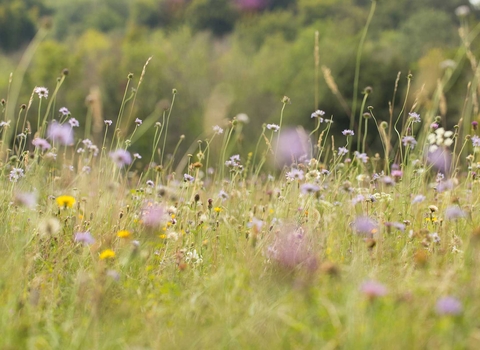Habitats & features
Nature-Based Solutions can be applied across a range of landscapes, find habitat examples and their features below.
Farmland
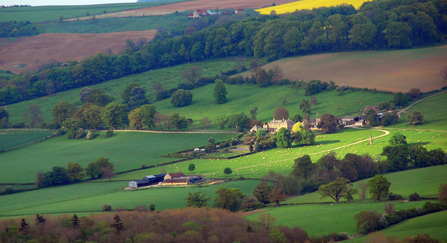
© Zsuzsanna Bird
Farmland can be categorised as arable land (for growing crops) or pasture land (for grazing).
Traditionally, farmland was a haven for a range of wildlife including birds and arable plants. However, over the past 60 years, the increased use of artificial chemicals combined with increasingly intensive farming methods has seen a dramatic decline in many species. Other impacts include soil erosion, which leads to reductions in water retention, poor soil structure and increased run off, which in turn has a negative impact on local streams and rivers.
However, food production and wildlife can work side by side and be mutually beneficial. Grass and wildflower field margins create a buffer strip of wildlife-friendly habitat, providing shelter and a source of food for a variety of species such as birds and pollinators, and improving connectivity between areas of grassland and woodland. This can benefit farmers by making use of less productive areas of the field and providing habitat for many species including natural predators of crop pests.
Regenerative agriculture is another approach to farming that aims to produce high quality food while also benefitting local wildlife. By incorporating practices such as mob grazing, cover crops and conservation tillage, this can improve the soil structure, increasing water retention and reducing erosion. This in turn increases overall yield, and also helps to mitigate the costly effects of climate change.
Useful links:
- The Nature Friendly Farming Network provides a range of case studies and events for farmers
- You can find lots of information and resources on the Farm Wildlife website
- For a guide to wildflower management on arable land, check out the Plantlife website
Freshwater
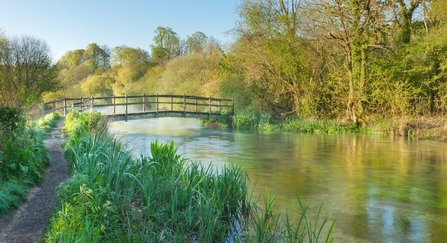
River © Guy Edwardes/2020VISION
Freshwater habitats range from rivers and streams to lakes, ponds, canals and ditches. However, few rivers in the UK show fully functioning natural processes. Due to modification by humans over the centuries, rivers have been deepened, straightened and embanked to improve boat access and increase the water flow. This has cut rivers off from their floodplains and stopped them from creating the mix of habitats that wildlife depends on.
Intensive cultivation of river catchments has also resulted in soil run-off and polluted waters. Pollution due to nutrients, soil and pesticides entering the river and events such as chemical spills have disastrous effects on our waterways.
Nature-based solutions can help to mitigate these issues. For example, river restoration work such as managing sediment and re-profiling the bank can alter the flow of the water. Shallower slopes can allow vegetation to develop, which in turn reduces soil erosion. This can help prevent pollutants such as fertilisers or road run-off from entering the river. The creation of flood storage ponds and wetlands can then provide safe areas for the river to overflow during periods of heavy rainfall, also providing refuge habitat for a variety of species. These processes come under the umbrella of natural flood management (NFM) and all help to reduce the risk of flooding downstream, protecting vulnerable urban areas.
For more information about our work on freshwater and wetland habitats, including our River Condition Assessment Service and answers to some FAQs, visit our 'Restoring wetlands' page.
Other useful links:
- The Freshwater Habitats Trust have a fantastic range of information and resources on pond creation and management
- The Newt Conservation Partnership is the practical delivery partner for the NatureSpace District Licensing Scheme and can work with landowners to fund pond creation in suitable areas
Grassland
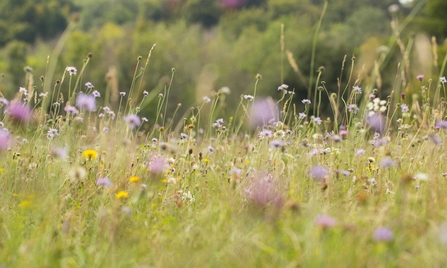
© James Adler
Grassland habitats are incredibly varied, from recreational parks to meadows and pastures. Meadows are enclosed grasslands where a hay or silage crop is taken in the summer, while pasture is generally grazed. There are three main categories of grassland:
- Calcareous - found on shallow lime-rich soils
- Acidic - found on sands, gravels and siliceous rocks
- Neutral - found on clay and loam soils
The current use, soil type and management practices all affect the quality and biodiversity of grassland habitats.
Grasslands have a huge potential for locking up carbon. Species-rich grasslands are huge carbon stores and when managed carefully, they lock in carbon and boost biodiversity. Low-quality grassland can be restored through sensitive management techniques. Grasslands often require seasonal grazing as part of their management, so they can form part of a livestock rotation. Creating wildflower meadows and/or field margins is another way of increasing biodiversity and supporting a whole host of pollinator species.
Useful links:
- Plantlife have lots of information available on meadow creation and management
- For smaller areas of grassland, check out Plantlife's No Mow May guide
Heathland
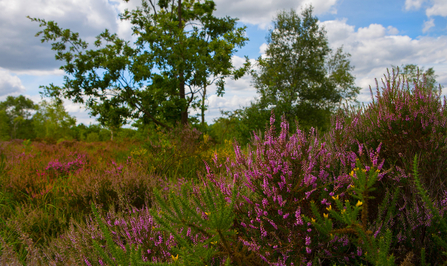
© Surrey Wildlife Trust
Lowland heath is the only type of heathland present in Surrey. It is found from sea-level up to about 300m on freely draining sands and gravels, and is characterised by heathers, gorse and grasses which are well adapted to the acidic heathland soil. Wet heath is found where either shallow peat or mineral soils are seasonally waterlogged. In shallow valleys in heathland, a type of lowland fen known as valley mire may be found, and is characterised by bog-mosses, rushes and purple moor-grass.
Over the past several decades, the decline in the value of heathland to the local economy led to its fragmentation and conversion to other uses. Since then, conservation programmes have sought to reverse the decline of heathlands through management and restoration.
Lowland peat has huge potential to act as a carbon store. Degraded peatland can be restored through the process of re-wetting. By raising the water level, anaerobic soil conditions are maintained, allowing carbon to be locked into the peat when plants die rather than being released into the atmosphere. This process also reduces the risk of wildfire and slows down subsidence.
Urban
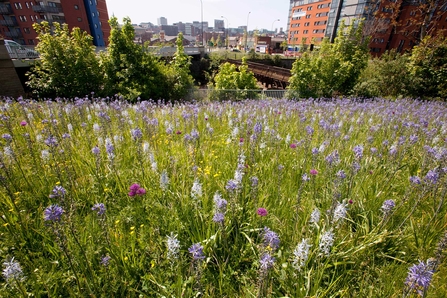
© Paul Hobson
Urban areas encompass a wide range of habitats, including road verges, parks, gardens and small ponds.
Parks and gardens are as good for us as they are for wildlife. For people living in the heart of urban areas, they offer an escape into nature that would otherwise be out of reach. These green spaces are also a lifeline for urban wildlife.
Green roofs and green walls are examples of NBS in urban areas and can be a really powerful tool, providing additional habitats in areas where space is limited. They support a range of wildlife including birds and pollinators, they can contribute to urban cooling, help to mitigate pollution, and they can provide physical and mental health benefits to local residents.
Wildlife gardening can also help individual gardens to become a haven for wildlife. To find out more, visit our wildlife gardening page.
Useful links:
- Find out more about Natural England's Green Infrastructure Framework
Wetland
Healthy wetlands store carbon and slow the flow of water, cleaning it naturally and reducing flood risk downstream. They support an abundance of plant life, which in turn provide perfect shelter, nurseries and breeding grounds for wildlife.
Unfortunately, many wetlands have been lost or damaged in recent decades due to pollution or unsustainable development.
Most wetlands are peat-forming, which occurs when the ground is too wet for vegetation to decompose. As well as providing a valuable habitat for wildlife, peatlands are ‘carbon sinks’, removing carbon from the atmosphere and storing it. They’re also vital forms of flood defence and water purification. Peat acts as a sponge, absorbing rain and mist, then gradually releasing it back. This regulates the flow of rivers, reducing flooding after storms and maintaining flow in dry weather. Wetlands act as a filter too, improving the water quality.
For more information about our work on freshwater and wetland habitats, including our River Condition Assessment Service and answers to some FAQs, visit our 'Restoring wetlands' page.
Woodlands
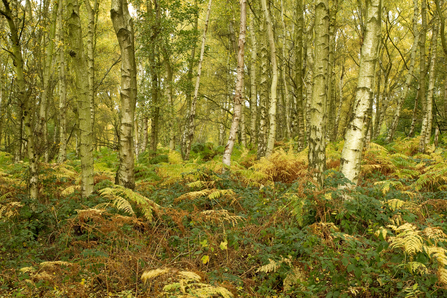
Birch woodland in autumn ©Ben Hall/2020VISION
There are four main categories of woodland found in Surrey:
- Ancient woodland - this is woodland that is known to have been present since 1600 or before. Indicator species such as wood anemone and enchanter’s nightshade can help us to determine whether a woodland falls into this category.
- Broad-leaved woodland - woodland that consists of a range of mostly deciduous tree species.
- Wet woodland - woodland that often has trees such as willows, birches and alder that thrive in poorly drained or seasonally flooded soils.
- Secondary woodland - woodland that has developed through natural processes on land previously cleared of trees. It is usually species-poor compared to ancient woodland.
Surrey is the most wooded county in the UK; however the tiny area of surviving ancient woodland is still under threat. Woodland birds and butterflies continue their long-term declines. Poor woodland management and pressure from development has led to the fragmentation and decline of woodland habitats.
Our woodlands are a key tool when addressing climate change for their carbon storage potential, but are less well known for their potential to limit flooding events, with wet woodlands providing a great service in slowing the flow of water downstream after extreme rain events. However if you are considering a tree-planting scheme, it is important to consider the potential impacts on surrounding habitat.
Useful links:
- The Forestry Commission have produced this helpful overview of woodland management techniques
- To learn more about woodland management, have a read of this factsheet produced by the Forestry Commission
Hedgerows
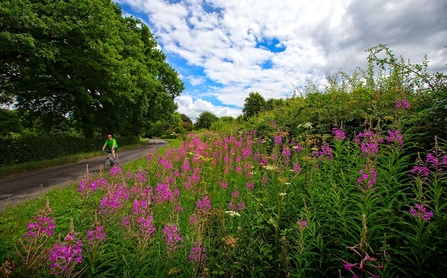
Jon Hawkins
Hedgerows are usually located along field margins. Often the only link between other isolated patches of wildlife habitat scattered across the landscape, thick, flora-rich hedgerows provide valuable nesting and foraging opportunities for a huge range of wildlife. Hedgerows also help reduce soil erosion and water run-off on arable land.
Traditionally, hedges are laid carefully. The stems are partially cut through low down, and the trunks bent over sideways and contained by stakes, creating a thick base to the hedge and filling any gaps. However, tens of thousands of hedgerows were removed from the mid-20th century onwards as a result of grants aimed at increasing agricultural efficiency. Many remaining hedgerows have been neglected or affected by drifting agricultural chemicals that are sprayed on nearby fields.
Restoring existing hedgerows and planting new ones in appropriate locations is an effective way of connecting fragmented landscapes whilst mitigating some of the impacts caused by urban development and the intensification of agriculture.
Useful links:
- The Hedgelink website contains lots of information and resources about hedgerows and their management
- The People's Trust for Endangered Species (PTES) also have a great range of resources available, as well as a simple hedgerow survey that you can carry out to better understand your hedgerows
Contact us
We work with a diverse range of clients, including farmers, smallholdings, golf courses and larger estates. If you would like to find out more about our services or if you have any queries, please contact us at nbs@surreywt.org.uk.
To request our services, please complete our enquiry form
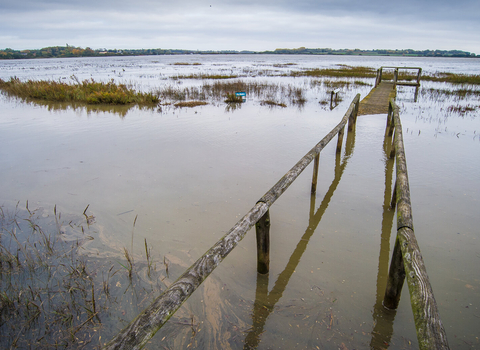
© Matthew Roberts
What are Nature-Based Solutions?
Nature-Based Solutions involve working with nature in order to protect and restore ecosystems, while also addressing challenges such as climate change or flood-risk management
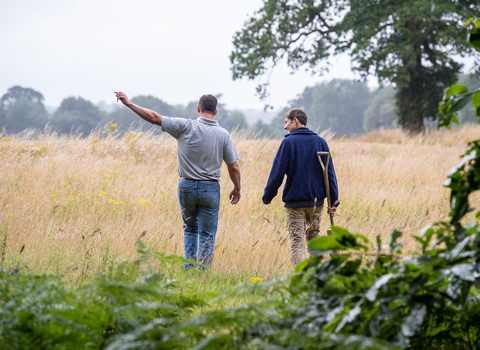
© Matthew Roberts
Funding options
It may be possible to obtain funding for certain restoration or intervention works on your land
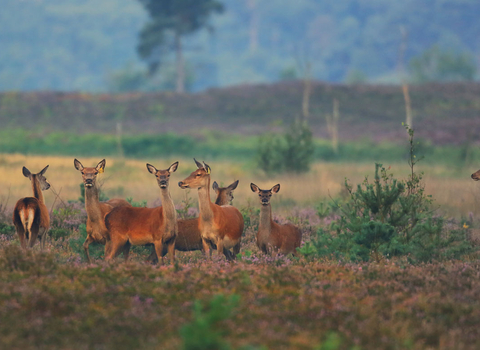
© Jon Hawkins

